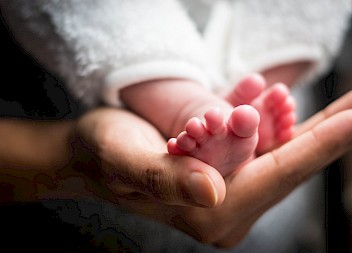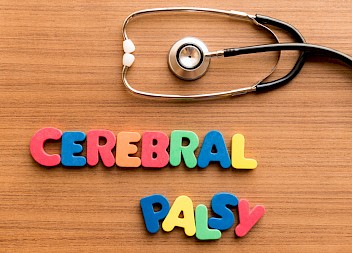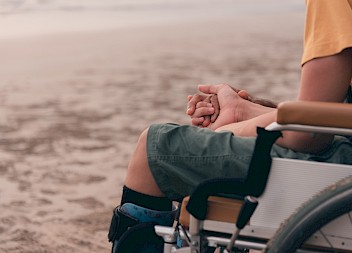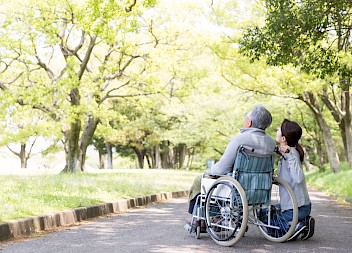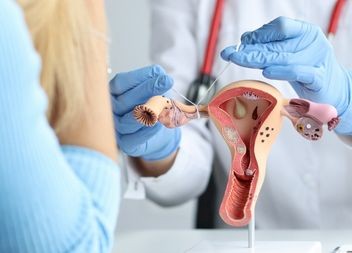The NHS provides some of the safest maternal outcomes in the world, but there is still a worrying variation in the quality of maternity care across individual hospitals and trusts.
Unsafe staffing levels, blame culture and archaic guidelines are putting thousands of women and babies at risk every year. A pressurised environment not only affects the quality of maternity care, but also restricts the choices available to mothers and birthing people.
September 17th is the World Health Organisation’s World Patient Safety Day which this year focuses on how the world must act now to improve safety standards and respect within maternal and newborn care to prevent women and babies from being exposed to unnecessary risks and harm.
Every day, 810 women die from preventable childbirth or pregnancy related causes. Every year, 6,700 newborns die every year, which is almost half of all deaths in under fives. And each year two million babies are stillborn, 40 percent of which occur during labour.
The WHO’s objectives are to raise awareness of the issues within maternity care, and advocate for effective, innovative and sustainable actions to improve patient safety and prevent these avoidable risks.
It has been more than ten years since previous guidelines were introduced, but new guidelines by National Institute for Health and Care Excellence (NICE) are currently at a draft stage. Updated recommendations include offering inductions in uncomplicated pregnancies two weeks earlier (39 weeks rather than 41 weeks gestation) for mothers who are more at risk of stillbirth or neonatal death – women over 35, with a BMI over 30, or from a BAME background.
As medical negligence solicitors, we welcome the need for urgent change. Too often we see the consequences of falling standards of maternal care, the families ripped apart by the loss of a baby or mother, or those facing a very different journey from the one they imagined during pregnancy from mistakes or errors made by maternity staff while in labour.
Obstetric claims continue to be the highest value of all claims made against NHS Resolution, the compensatory body of the health service. NHS Trusts are rightly being scrutinised for their inadequacy. And the government has pledged an additional £200-350 million a year in its budget to directly improve maternity care standards.
Why do birth injuries happen?
One of the most common causes for a birth-related injury is a delayed or prolonged birth, that being active labour that lasts over 18 hours. The longer the baby is in the birth canal, the more the pressure increases within the brain, increasing the risk of strokes, oxygen deprivation, and brain bleeds.
A difficult birth resulting in injury may also be more likely to occur because of:
- A large baby (over 8lb 13oz)
- Prematurity (babies born before 37 weeks)
- Cephalopelvic disproportion (the size and shape of a mother’s pelvis)
- Shoulder dystocia (where the shoulder gets stuck in the pelvis)
- Abnormal presentation (breech or traverse etc)
- Maternal obesity
Other risk factors may be a very short labour, lack of fluid surrounding the baby, or congenital abnormalities.
What is the most common birth injury?
Bruising or forceps marks are some of the most common birth injuries, but these are usually temporary and will subside.
Those which cause serious or permanent effects are usually a combination of hypoxia (lack of oxygen) and mechanical trauma.
Cerebral palsy is a brain injury that may result from errors or injury at birth. This may be caused due to complete or partial lack of oxygen during the birth process, infections, or trauma to the head and/or neck, such as the improper use of forceps etc. Find out more about cerebral palsy birth injuries here.
Brachial plexus injury (BPI) is where nerves in the neck are damaged during delivery. This often results in a condition called Erb’s Palsy which is paralysis to the shoulder, arm or hand. In the majority of cases, this will be temporary, but one percent of cases will result in permanent paralysis. You can find out more about Erb’s Palsy here.
Shoulder dystocia is a rare complication seen in one in every 150 vaginal deliveries. This is where the shoulder gets stuck behind the mother’s pubic bone. Maternity staff must act quickly and safely, as you cannot predict the outcome. If not managed appropriately, it can cause injuries such as nerve damage (Erb’s Palsy), hypoxia if the head gets stuck which may result in a brain injury, or in the saddest of cases, stillbirth.
Babies may also suffer broken bones during delivery from excess twisting or pulling or the improper use of instruments. Collar bones are the most commonly broken bones, whereas fractures to the skull and spine are rarer.
Injuries to the mother may include vaginal tears, postpartum heamorrhaging, and a ruptured or prolapsed uterus.
How do you prove a birth injury was due to negligence?
It is important to note that some birth injuries are unavoidable, due to the necessity to deliver a baby quickly to prevent more serious complications from a delayed birth.
If intervention is necessary, you should be able to make an informed decision about the treatment or techniques being offered to you. Benefits and disadvantages should be discussed on an individual basis. There are growing concerns that BAME women – those from a black, Asian and minority ethnic background – face alarming disparities in the standard of care they receive and are at an even higher risk of poor perinatal outcomes.
Some examples of negligent maternity care include:
- Lack of screening or mistakes made during scans
- Midwifery or obstetric errors – i.e., incorrect suturing or improper use of instruments
- Mismanagement of complications such as pre-eclampsia etc.
- Failure to treat infections such as UTIs, sepsis or Group B Strep
- Inadequate monitoring which leads to miscarriage, stillbirth or neonatal death
- Mistreatment during a difficult birth – i.e., failure to recognise signs of foetal distress
- Injuries during or after birth to baby or mum such as undiagnosed or inadequately repaired perinatal tears (3rd and 4th degree), incorrectly performed episiotomies, delays in performing an emergency caesarean section, or surgical errors.
Can you sue for birth trauma?
Litigation is said to place a strain on the NHS. However, without investigations and litigation there would be far less incentive for change. Patient safety for both mum and baby is paramount; the government’s initiatives and the NHS trusts’ additional efforts to comply are leading to real improvements.
A woman's experience during childbirth has the potential to either empower her or inflict damage and emotional trauma; sadly, we are reminded of the signifcant burden of risks and harm women and newborns are exposed to when receiving care during childbirth.
These injuries affect mothers and their families for the rest of their lives and the consequences are not always physical. The psychological impact is often left unsaid, with mothers struggling to bond with their new baby, having post-traumatic stress disorder (PTSD) from the trauma of their injuries, or facing relationship breakdowns - all which could have been avoided had errors not been made with their maternal care.
If you believe that you may have suffered a birth injury, that your labour and delivery were mismanaged, or that a mistake was made during your pre or postnatal care, you might have a medical negligence claim and you may be eligible for birth injury compensation. Our maternal birth injury claims solicitors understand what you’re going through and we can help you get answers about your care.



